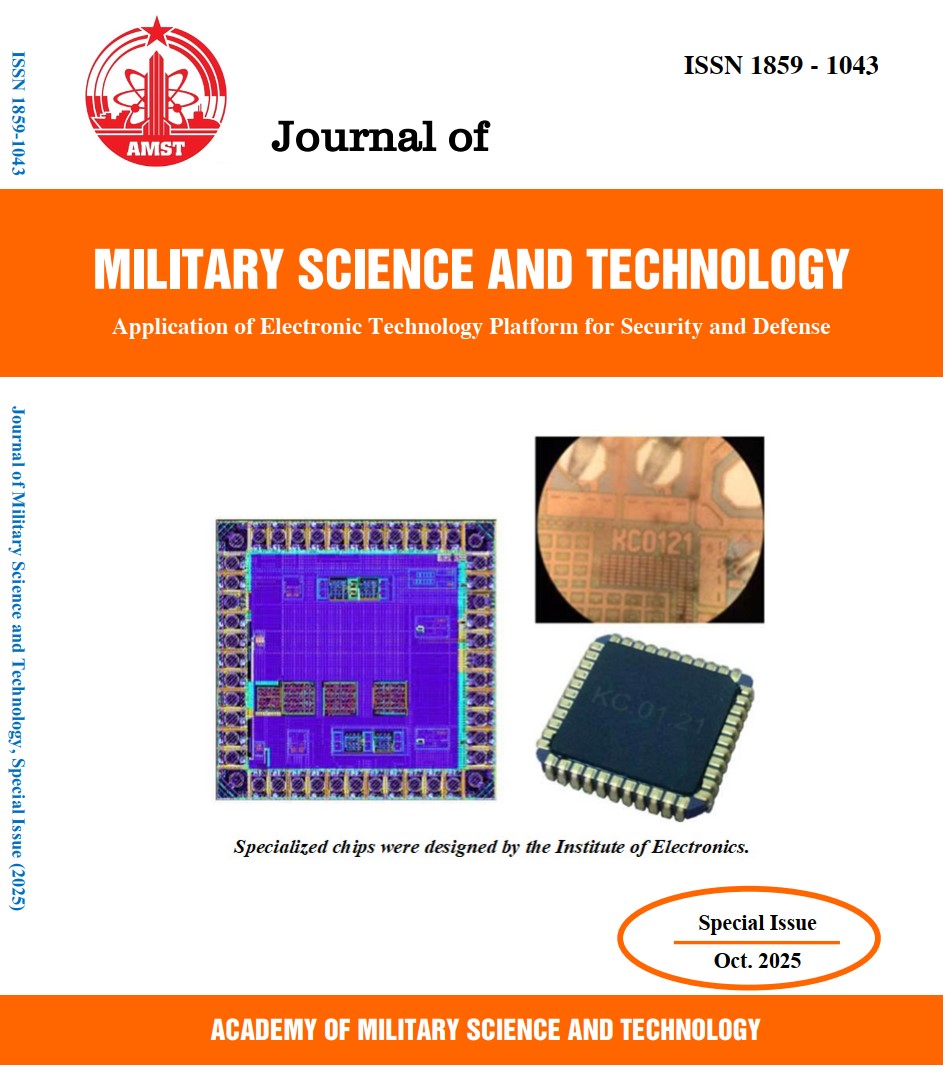A deep learning solution for compressed semantic segmentation of LiDAR point cloud maps
340 viewsDOI:
https://doi.org/10.54939/1859-1043.j.mst.IITE.2025.131-138Keywords:
Deep learning, Localization and navigation; Point cloud; LiDAR; Semantic segmentation.Abstract
Navigating Unmanned Aerial Vehicles (UAVs) in Global Navigation Satellite System (GNSS)-denied environments often relies on pre-built Light Detection and Ranging (LiDAR) maps. However, the large memory footprint and high computational cost of these point cloud maps pose significant challenges for resource-constrained UAVs. This paper proposes a deep learning solution using a lightweight, modified RandLA-Net architecture to efficiently compress and semantically segment these maps. Our results demonstrate a significant reduction in model size and memory usage while maintaining competitive segmentation accuracy, presenting a viable solution for real-time, on-board processing on embedded systems.
References
[1]. Chang, Y., “A Review of UAV Autonomous Navigation in GPS-Denied Environments,” Robotics and Autonomous Systems, Vol. 170, p. 104533 (2023). DOI: https://doi.org/10.1016/j.robot.2023.104533
[2]. Meng, H.-Y., “VV-Net: Voxel VAE Net with Group Convolutions,” in IEEE/CVF International Conference on Computer Vision (ICCV) (2019). DOI: https://doi.org/10.1109/ICCV.2019.00859
[3]. Guibas, H. T., “KPConv: Flexible and Deformable Convolution for Point Clouds,” in IEEE/CVF International Conference on Computer Vision (ICCV), Seoul (2019).
[4]. Hu, Q., “RandLA-Net: Efficient Semantic Segmentation of Large-Scale Point Clouds,” in IEEE/CVF Conference on Computer Vision and Pattern Recognition (CVPR), Seattle, WA, USA (2020). DOI: https://doi.org/10.1109/CVPR42600.2020.01112
[5]. Yang, B., “PIXOR: Real-Time 3D Object Detection from Point Clouds,” in IEEE/CVF Conference on Computer Vision and Pattern Recognition (CVPR) (2018). DOI: https://doi.org/10.1109/CVPR.2018.00798
[6]. Qi, C. R., “PointNet: Deep Learning on Point Sets for 3D Classification,” in IEEE/CVF Conference on Computer Vision and Pattern Recognition (CVPR) (2017).
[7]. Qi, C. R., “PointNet++: Deep Hierarchical Feature Learning on Point Sets in a Metric Space,” in Advances in Neural Information Processing Systems (NeurIPS) (2017).
[8]. Landrieu, L., “Large-Scale Point Cloud Semantic Segmentation with Superpoint Graphs,” in IEEE/CVF Conference on Computer Vision and Pattern Recognition (CVPR) (2018). DOI: https://doi.org/10.1109/CVPR.2018.00479
[9]. Armeni, I., “Joint 2D-3D-Semantic Data for Indoor Scene Understanding,” in IEEE/CVF Conference on Computer Vision and Pattern Recognition (CVPR) (2017).







